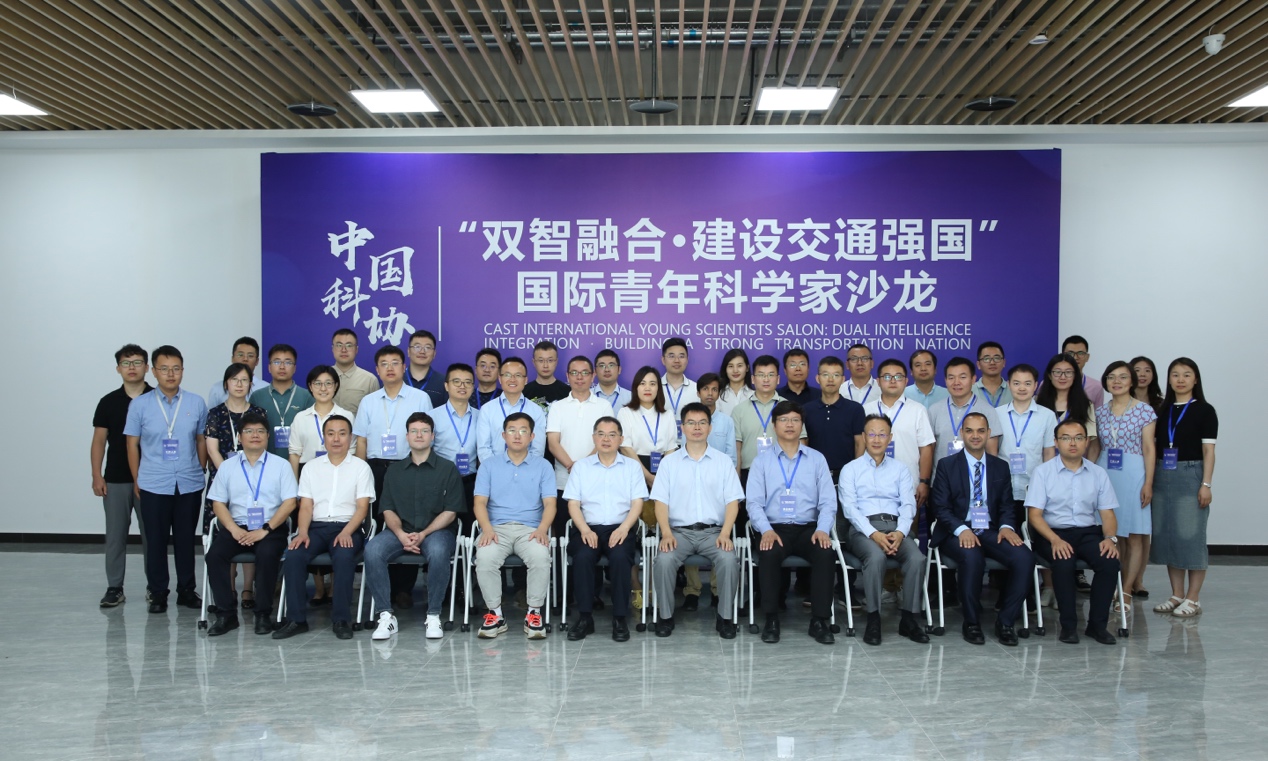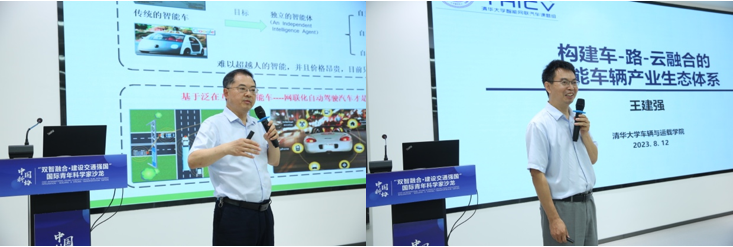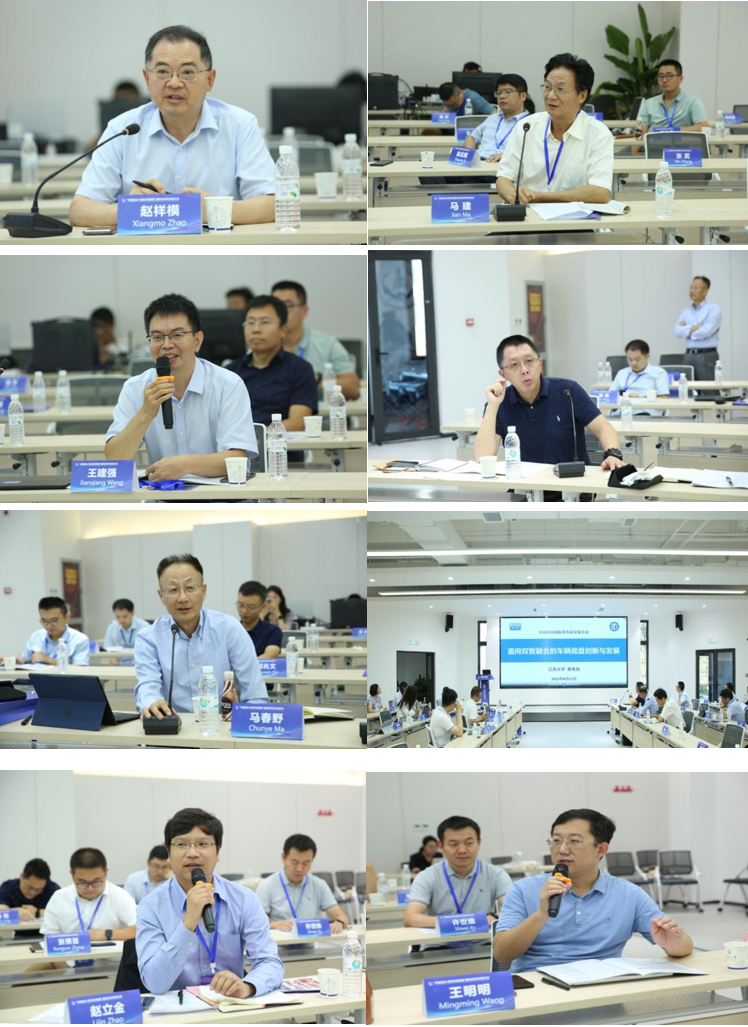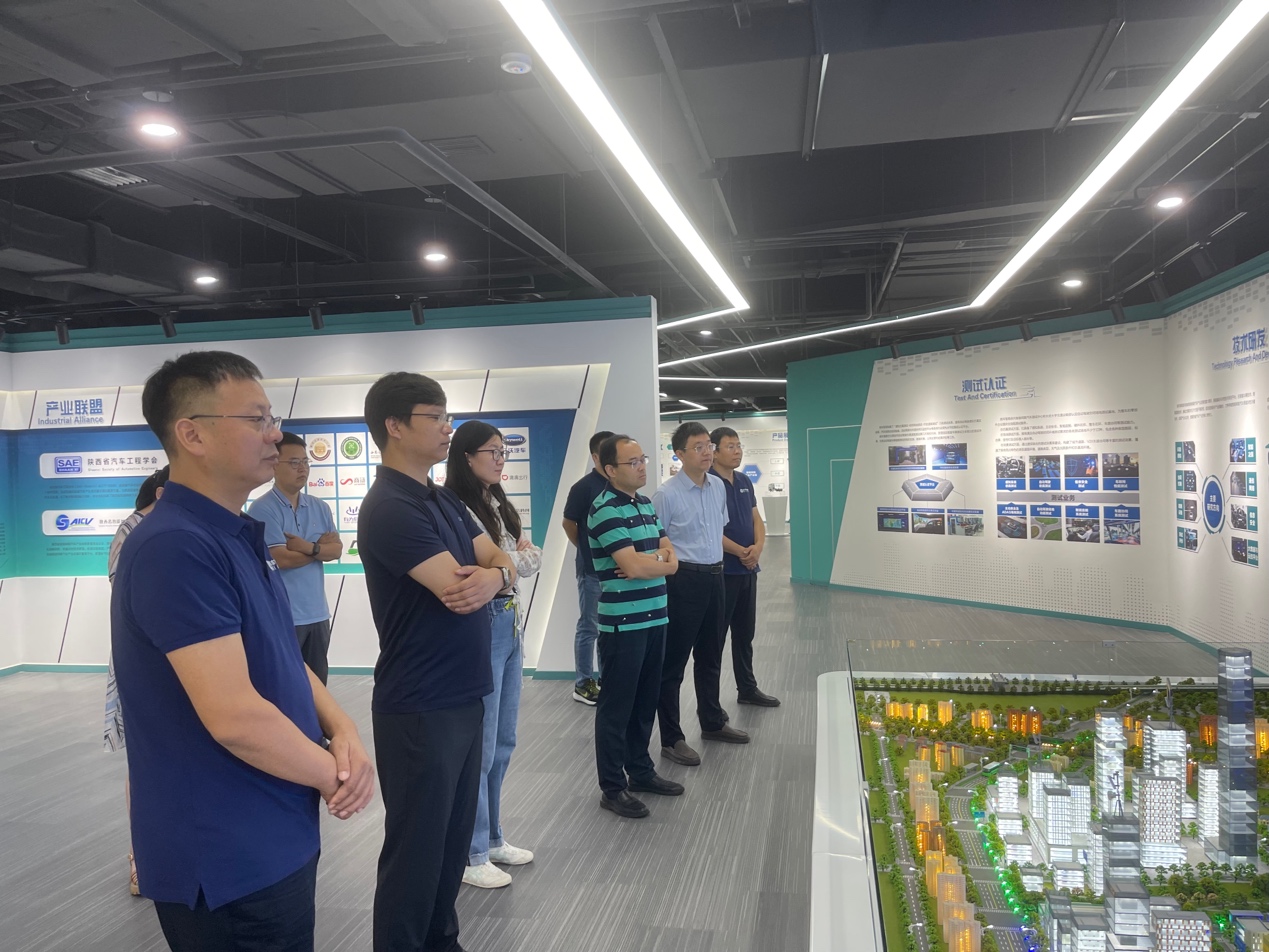From August 12th to 13th, 2023, the China Association for Science and Technology (CAST) hosted the International Young Scientists Salon under the theme "Integration of Dual Intelligence and Building a Strong Transportation Nation" in Xi’an, Shaanxi. This event was organized by CAST in collaboration with the China Society of Automotive Engineers and received support from Chang’an University and the Shaanxi Society of Automotive Engineers. The salon prominently centered around the cutting-edge and trending subjects within the realm of "Integration of Dual Intelligence." It garnered participation from young scientists hailing from various countries, including China, the United States, France, Australia, Singapore, Egypt, Pakistan, and others. Together, they delved into the latest advancements in global research concerning "Integration of Dual Intelligence." The salon's agenda encompassed a spectrum of activities, encompassing keynote presentations, in-person interactions among young scientists, roundtable discussions, special presentations, expert evaluations, and site visits. Notably, the live stream on the China Society of Automotive Engineers’ video platform achieved an impressive viewership exceeding 10,000. Leading the salon was Professor Xuan Zhao, Dean of the School of Automotive Engineering at Chang’an University, who expertly assumed the role of chairman throughout the event.

During the session of plenary speech, Professor Xiangmo Zhao, the President of Xi’an Technological University, delivered an engaging presentation titled “The Integrated Architecture and Key Technologies of Vehicle-Road-Cloud-Network for Connected Autonomous Vehicles.” In his presentation, he introduced key technologies including “Holographic Information Fusion and Collaborative Services based on Cloud Platform,” “Deployment, Integration, and Optimization of Multi-Mode Heterogeneous Communication Networks,” and “Information Exchange and Key Technologies for Security.” Following this, Professor Jianqiang Wang, the Dean and Party Secretary of the School of Vehicle and Mobility at Tsinghua University, presented on the topic of “Building an Intelligent Vehicle Industry Ecosystem Integrated with Vehicle-Road-Cloud.” He put forth a comprehensive method for quantifying integrated driving risks across various working conditions, considering the intricate interplay between vehicles, roads, and cloud systems. This method is rooted in the principles of interaction and safety, offering insights into the future industrial applications and developmental trajectories of intelligent vehicles. The delivered speeches encapsulated the cutting edge of the field, eliciting enthusiastic responses from the attending young scientists.

During the roundtable interview session, the attendees and young scientists engaged in a comprehensive dialogue concerning the growth of emerging scientists and the pressing challenges in the realm of "Dual Intelligence Integration." Both in-person and online, young scientists from around the world enthusiastically contributed to the discourse. Dr. Karem Elsayed Elfeky, an Assistant Professor of the School of Energy and Power Engineering at Xi’an Jiaotong University, provided insights from the perspective of research platforms. He emphasized the importance of selecting conducive environments and securing optimal resources to fully harness the knowledge and skills of young scientists. Dr. Anthony Trioux, an Associate Professor at Xidian University, drew upon his own research domain to share experiences in collaborative problem-solving across diverse disciplines and specialties. Dr. Ali Tahir, hailing from the School of Transportation Engineering at Chang'an University, illuminated the experiences of international exchange and collaboration, as seen through the lens of his laboratory and closely-knit team.

Professor Xiangmo Zhao, the President of Xi'an Technological University, offered guidance to young scientists based on their patriotic dedication, perseverance, and collaborative spirit. Professor Jian Ma, former President of Chang'an University and Chairman of the China Society of Automotive Engineers, emphasized the necessity of a comprehensive top-level design to ensure the orderly development of the intelligent connected vehicle industry. Professor Jianqiang Wang, Dean and Party Secretary of the School of Vehicles and Mobility at Tsinghua University, believed that the path towards a brighter future, including Level 5 autonomous driving and the integration of vehicles, roads, and cloud systems, is an inevitable one. Professor Chunye Ma, Chief Professor at the School of Transportation at Southeast University, stressed the importance of seamlessly combining intelligent vehicles with smart transportation infrastructure. He highlighted leveraging China's advantage in smart city infrastructure to empower the entire industry and ensure the orderly growth of the intelligent connected vehicle. Professor Mao Guoqiang, Leading Professor at Xidian University, and Founding Dean of the Institute of Smart Transportation, dissected the challenges of dual intelligence integration from the perspectives of technological, standardization, and policy-related issues. Mr. Lijin Zhao, Assistant Secretary-General of the China Society of Automotive Engineers, offered guidance to young scientists on bridging industry and technology through innovation platforms and technological advancement, thereby supporting China's endeavor to become a powerhouse in the automotive industry. Mr. Mingming Wang, Chief Engineer of Autonomous Driving at Guangzhou Automobile Group Co., Ltd., emphasized the critical importance of data compliance in dual intelligence integration, stressing the need for technical solutions to ensure sensitive data processing.

During the keynote speech session, young scientists shared their experiences and exchanged viewpoints in the realm of information technology and dual intelligence integration. Professor Yingfeng Cai from Jiangsu University delivered a report titled “Innovation and Development of Vehicle Chassis for Dual Intelligence Integration,” presenting a method for emergency rescue vehicle key driving state estimation. This method involves designing a coordinated control strategy for the longitudinal and lateral-vertical aspects of emergency rescue vehicle chassis to enhance integrated control performance. Professor Jia Hu from Tongji University gave a report on “Change Lane as You Wish: CooperativeAdaptive Cruise Control Lane Change Controller.” He introduced the Intrusion-based Convoy Lane Changing (ICLC) and analyzed its safety and traffic efficiency. Professor Zhigang Xu from Chang’an University discussed the optimization and testing of the longitudinal control strategy for heavy-duty truck platoons considering communication delay in his report “Optimization and Test of Longitudinal Control Strategy for Heavy Truck Platoons Considering Communication Delay.” Associate Researcher Hong Wang from Tsinghua University summarized the key challenges and Chinese solutions for expected functional safety in intelligent connected vehicles in her report titled “Key Challenges and Chinese Solutions for SOTIF in Intelligent Connected Vehicles.” Dr. Zhong Cao, also from Tsinghua University, discussed the “Continuous Improvement of Self-driving Cars” in his report, focusing on methods to address AI module coupling risks, achieving safety in complex weather conditions and avoiding dangerous driving behaviors with unpredictable predictions. Researcher Peng Liu from Zhejiang University presented a report on the “Non-Technical Bottlenecks of Automated and Intelligent Connected Vehicles: Human Factors and Social Challenges,” where he introduced solutions for human factor risks, human-vehicle social interactions, social acceptance, safety evaluation and management, and responsibility attribution. These reports provide insights into the development and application of intelligent connected vehicle technology through academic research.
The participating experts provided detailed assessments of the keynote speeches. They believe that in the wave of the Fourth Industrial Revolution, driving the development of intelligent connected vehicles has become an urgent task. However, achieving this goal requires a close integration of multiple domains such as information, transportation, and urban planning. For young scientists entering the field of intelligent connected vehicles, expanding their horizons, embracing emerging technologies, and engaging in interdisciplinary learning have become particularly crucial. To seamlessly integrate smart vehicles with intelligent transportation infrastructure, we can draw extensively from China's strengths in the realm of smart city infrastructure, imparting the power of these foundational structures to the entire industry.
At the end of the conference, young scientists visited the Shaanxi Intelligent Connected Vehicle Research Institute Co., Ltd., Chang’an University Transportation Museum, and Chang’an University National Closed Field Test Base of Autonomous Driving Certified by Ministry of Transport.

This conference revolved around discussions on the strategic directions, technological bottlenecks, standard systems, collaborative mechanisms, policy support, and other aspects related to the "dual-intelligence integration" complex system. It provided a platform for interdisciplinary exchanges among young scientists, broadened the perspectives of the participants, facilitated the growth of young scientists, and offered a great opportunity for discovering new issues, exploring new directions, proposing fresh viewpoints, and exchanging novel ideas.

